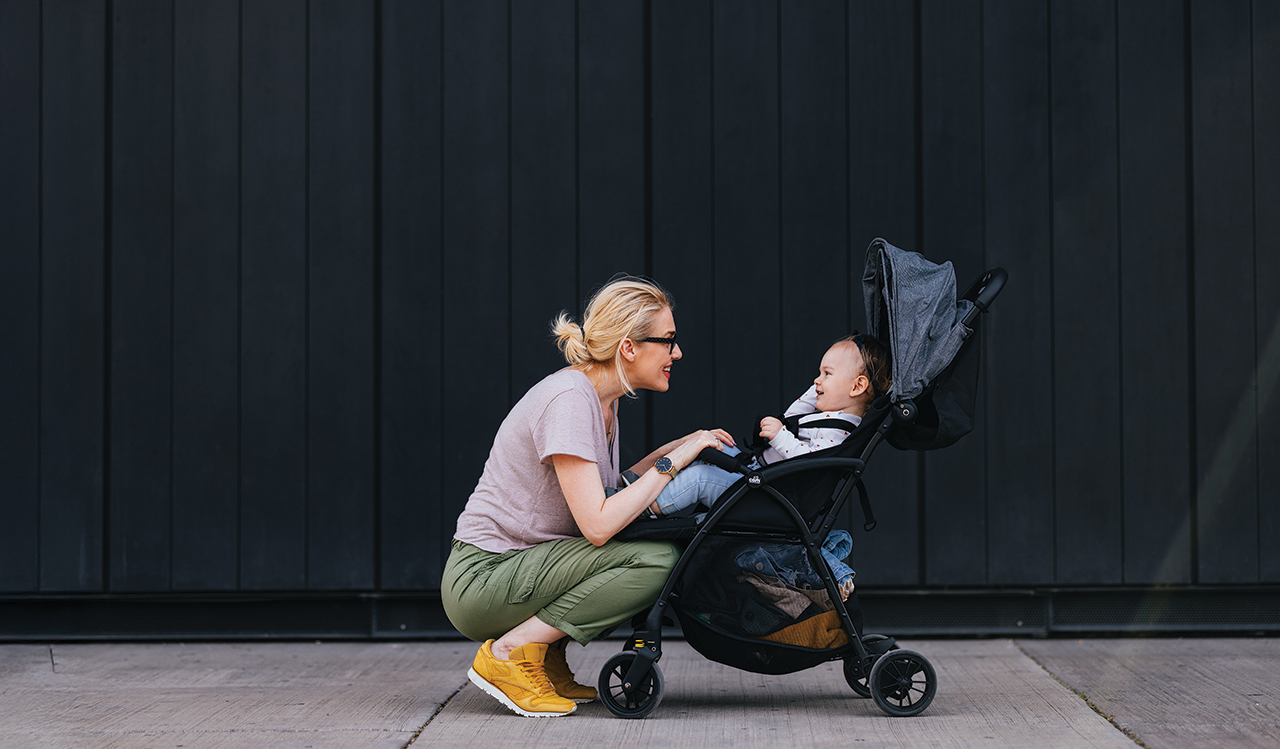Using Artificial Intelligence (AI) on ASTM standards and related intellectual property is prohibited. Violations will result in suspension of access.

By Donovan Swift
Nov 03, 2025
ASTM International helps make the world a safer place across many spaces, but consensus standards are particularly valuable in the infant product industry. From cribs to highchairs to strollers, new and updated baby products hit the market everyday, so standards are essential in helping make sure those products are as safe as possible for the most vulnerable consumers. The Baby Safety Alliance uses those standards to give parents peace of mind through their verification program. I spoke with executive director Lisa Trofe about how her organization verifies infant product safety, keeps up with a changing marketplace, helps develop standards, and more.
Q. Can you tell me about your work with the Baby Safety Alliance? What is the verification program, and how are ASTM standards incorporated?
A. The Baby Safety Alliance (formerly the Juvenile Products Manufacturers Association) is about 60 years old, and we’re a trade association representing baby and children’s products in North America.
We got involved with the ASTM process as an organization when a group of manufacturers came together to work on a standard for highchairs. The manufacturers really wanted to use the ASTM process to standardize the product category and ensure that they were creating the safest products possible. Since then, we’ve been involved as an industry and as an association, and our verification program, which is almost 60 years old as well, started with that highchair standard. We then built additional product categories into the verification program as ASTM standards were developed.
Up until the Consumer Product Safety Improvement Act (CPSIA) was passed in 2008, our verification program was based on the ASTM standards. So when products were tested to the verification program, they were just meeting the standard(s) in place at the time.
After the CPSIA was passed, we expanded the program to cover not just testing for the ASTM standard, but also federal requirements for compliance where the Section 104 rules (for durable infant products, like cribs) exist, as well as state requirements and major retailer requirements.
So, the verification program really became a turnkey testing solution for the manufacturers that participate in it. We continue to add categories as
ASTM standards are published for new categories within our industry. Some of the recent ones include locks and latches and some of the infant bathing products.
We’re also tracking some of the newer standards that are still in development as well. We really use the standard as the foundation for the verification program and then layer on those additional requirements to make it turnkey. We’re up to about 30 different product categories now.
Q. How are individual products verified through the program?
A. We have a certification committee within the organization, and they are the technical experts and manufacturers who really ensure that our verification protocols are staying up to date.
For a manufacturer to participate in the program, they’re required to test at one of the three contracted testing labs that we work with. Baby Safety Alliance contracts with those labs, and the product then goes through all the applicable protocols, including testing for that type of product category, including the ASTM standard. Once the product has passed all those testing protocols, we award it the verification seal, which they can use on the product in the package and provide consumer awareness that the product has been tested to the most stringent safety standards that are in place.
We do require annual testing as part of that program, which is a little more stringent than what is typically required.
Anytime there’s a material change to a product or if the standard is updated, we require that the product be retested, as well, to meet the latest standard requirements.
Q. Why is the seal of verification so important and why, in general, are standards in this industry so essential?
A. I think the seal is important because it shows that the product has undergone the most stringent safety testing that is available in the marketplace today. We know the federal requirements more often than not defer to the ASTM standard. So that ties into the second part of your question. The standards are so important because all the other requirements rely upon them or defer to them. And when we think about our industry and the products we are creating standards for and certifying, they are being used by the most vulnerable citizens: babies and small children. So, we need to make sure that they are the safest products they can be. Also, these products are used by parents and caregivers who are exhausted, who may have missed the directions, so we need to make sure that the standards account for these considerations in the design and use of the product. That’s why parents can look for the verification seal and know the product has been tested and can be trusted.
Q. All standards are important, especially within the infant space, but are there any specific standards that stand out to you as especially vital?
A. One that immediately comes to mind is the full-sized crib standard (F1169). That’s a product category that babies are spending a tremendous amount of time in. When I was beginning my work with the organization, we began seeing incidents related to drop-side cribs, where the drop side was failing and causing injury or other hazards to the child. So, with that incident data, the standards committee really came together and identified ways to create or design a crib without that added feature so they could ensure they were eliminating any possibility of that type of incident happening, which led to a much safer product.
Another great example is pinch points on strollers. If a parent is unfolding a stroller quickly while holding a baby on their hip, but there’s a young sibling nearby, running around, they could get their fingers pinched in the folding or unfolding of those products. The standards committee identified that as a problem and saw an incident pattern and figured out a way to create design elements to eliminate that kind of problem. So, it’s really the understanding of the incident data and then creating requirements in the standards to ensure that we’re eliminating those types of hazards that I think is the most fascinating part of participating.
As we continue to see new products hitting the market, the goal is to understand how they’re being used, how they can be misused, what the unintentional hazards might be, and then building standards to eliminate those. As products continue to evolve, the standards-development community really keeps ahead of the curve in ensuring that the standards are in place to keep the safest products on the market.
Q. It sounds like part of the program is devoted to verifying new or updated products as they hit the market.
A. Anytime a new product enters the market or a standard is developed for products that are already in the market, the verification program becomes very important to ensure the product is up to date in meeting those requirements. In fact, we have a committee within the industry – the ad hoc subcommittee – and that group is constantly evaluating the marketplace to see what might be out there but doesn’t fall into a current standard.
That committee brings those new or evolving products to the individual committees where they fit best. Then that specialized committee can evaluate the products against the existing standard or work to create a new one, as appropriate. That’s one of the great things about our children’s products standard community: We’re constantly looking at the environment and the marketplace to make sure we’re capturing as many products as we can to put standards behind them.
Q. Can you talk a little about your career background and how you became involved with ASTM?
A. I have a background in association management. I did not come from the safety field or the industry itself. I’ve been managing associations for most of my career. I joined the Baby Safety Alliance in 2012 as the certification program director and a significant part
of my job was serving as the facilitator for the industry and the ASTM standards-development process. I would work hand in hand with each of the individual subcommittee chairs for all the product categories that we represent and ensure that we were keeping up to date with what’s in the marketplace and ensuring that the standards were as robust as possible.
I’ve worn several different hats here and have been honored to be sitting in the executive director seat for the past three years. I still participate in every ASTM meeting when they take place in West Conshohocken, and it’s a great opportunity to bring the industry together and work toward the greater good of safer products.
Q. So, Baby Safety Alliance is not just using ASTM standards and applying them but also giving feedback to help develop new standards?
A. Absolutely. Baby Safety Alliance’s certification committee is full of technical experts in the field. They’re all manufacturers. They all participate in the program itself, and they all participate in ASTM meetings as well. In fact, we hold our in-person certification committee meetings at ASTM headquarters when we’re there for the week. It’s a great opportunity to participate in real time and give and take and help develop the standards as a manufacturing community.
Q. Do you have any advice for someone getting started in the infant product or infant safety space? Why should they get involved with ASTM?
A. ASTM is an amazing community of like-minded people who have the best interests of the families and children we serve at heart. They are the most passionate group of people I have ever worked with in my career. They care so much about making products safe, and ASTM is the best forum to do that because it’s a consensus-based process. So, it’s not any one group of stakeholders. We have test labs, we have law firms, we have consultants, and we have consumers, which is great. All the voices around the room contribute to making the standards robust and the product safe.
I think for someone who is new to the industry, the ASTM community is not just great for learning about product safety and contributing to the work, but it’s a tremendous networking opportunity. The community itself is warm and welcoming and always interested in collaboration. So, that’s a great opportunity for folks to learn from one another and learn from the process. I’ve also participated in many of the educational opportunities that ASTM offers for folks who are new or who may be interested in a leadership position in a committee or a task group. All those resources make it easy to get involved and easy to feel comfortable once you are involved. ●
Donovan Swift is managing editor of Standardization News.

Lisa Trofe is the executive director for the Baby Safety Alliance (formerly the Juvenile Products Manufacturers Association, JPMA), where she handles the association’s strategic and operational activities, as well as its regulatory and legislative agenda. She works on the Baby Safety Alliance Verification Program, which verifies more than 3,200 juvenile products in 30 categories annually. She serves as chair of the subcommittee on infant bedding (F15.19), and she is a member of the executive subcommittee (F15.90). She holds the certified association executive designation and earned graduate certificates in product safety management and advanced product safety management from St. Louis University’s John Cook School of Business.
November / December 2025